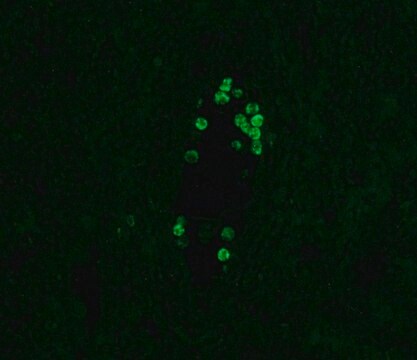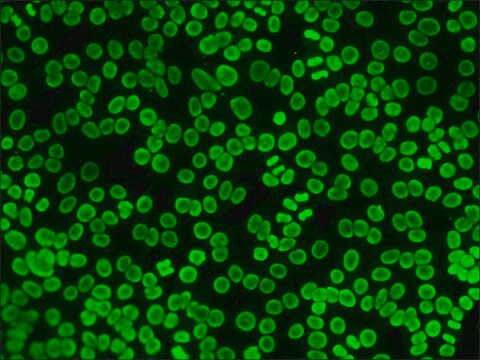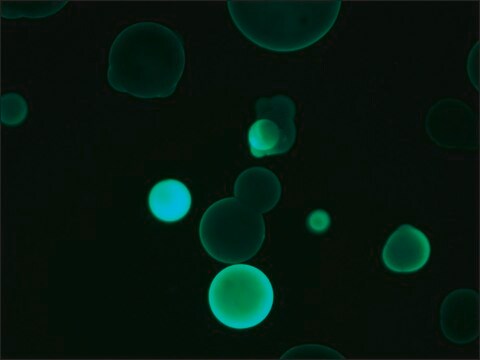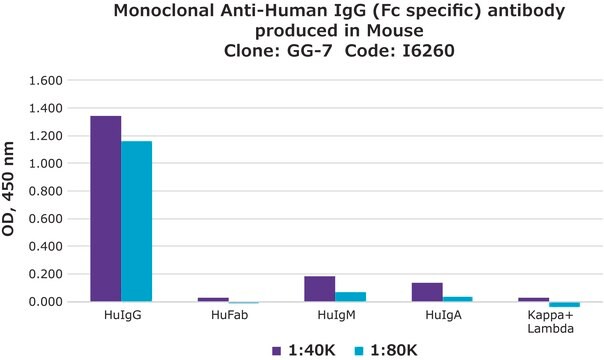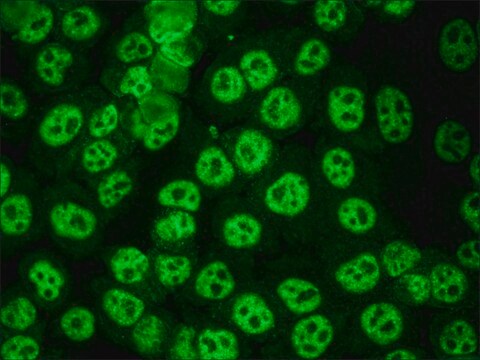F5016
Anti-Human IgG (Fc specific)−FITC antibody, Mouse monoclonal
clone HP-6017, purified from hybridoma cell culture
Sinónimos:
Monoclonal Anti-Human IgG (Fc specific)
About This Item
Productos recomendados
origen biológico
mouse
Nivel de calidad
conjugado
FITC conjugate
forma del anticuerpo
purified from hybridoma cell culture
tipo de anticuerpo
secondary antibodies
clon
HP-6017, monoclonal
formulario
buffered aqueous solution
reactividad de especies
rabbit, sheep, horse (IgG), goat, human
condiciones de almacenamiento
protect from light
técnicas
dot immunobinding: 1:16
particle immunofluorescence: 1:16
isotipo
IgG2a
Condiciones de envío
dry ice
temp. de almacenamiento
−20°C
modificación del objetivo postraduccional
unmodified
¿Está buscando productos similares? Visita Guía de comparación de productos
Descripción general
Especificidad
Aplicación
- Fluorescent Dot Immunobinding Assay (F-DIBA)
- Particle Immunofluorescent Assay (F-IFMA)
- flow cytometry
Acciones bioquímicas o fisiológicas
Forma física
Cláusula de descargo de responsabilidad
¿No encuentra el producto adecuado?
Pruebe nuestro Herramienta de selección de productos.
Palabra de señalización
Danger
Frases de peligro
Consejos de prudencia
Clasificaciones de peligro
Resp. Sens. 1 - Skin Sens. 1
Código de clase de almacenamiento
12 - Non Combustible Liquids
Clase de riesgo para el agua (WGK)
WGK 3
Punto de inflamabilidad (°F)
Not applicable
Punto de inflamabilidad (°C)
Not applicable
Certificados de análisis (COA)
Busque Certificados de análisis (COA) introduciendo el número de lote del producto. Los números de lote se encuentran en la etiqueta del producto después de las palabras «Lot» o «Batch»
¿Ya tiene este producto?
Encuentre la documentación para los productos que ha comprado recientemente en la Biblioteca de documentos.
Los clientes también vieron
Nuestro equipo de científicos tiene experiencia en todas las áreas de investigación: Ciencias de la vida, Ciencia de los materiales, Síntesis química, Cromatografía, Analítica y muchas otras.
Póngase en contacto con el Servicio técnico





